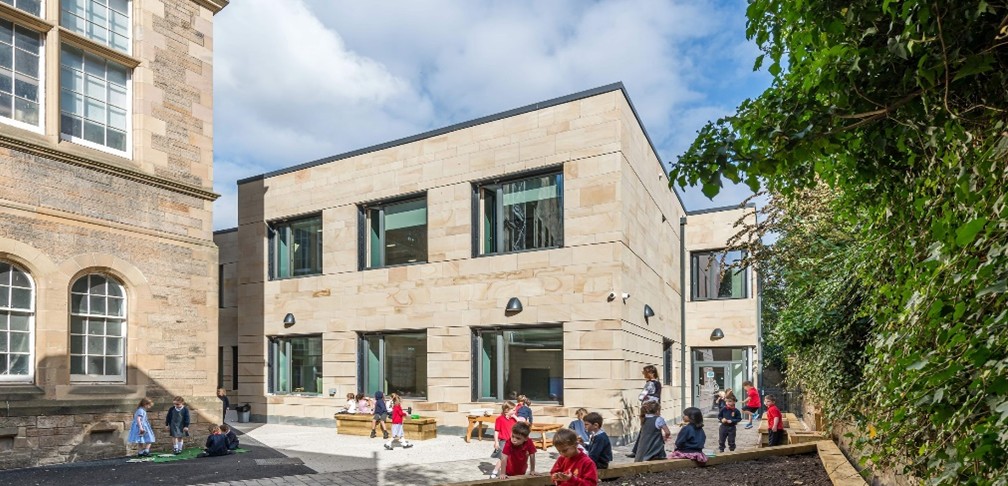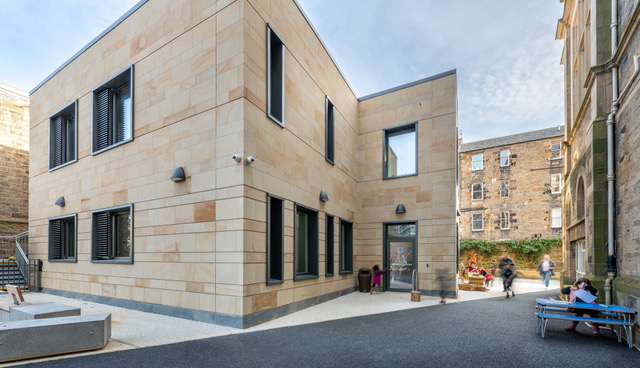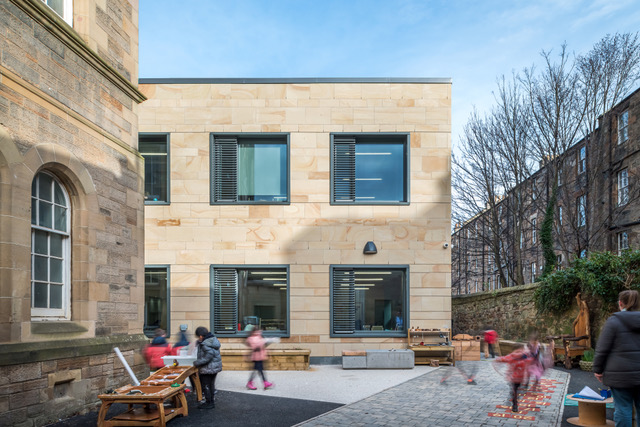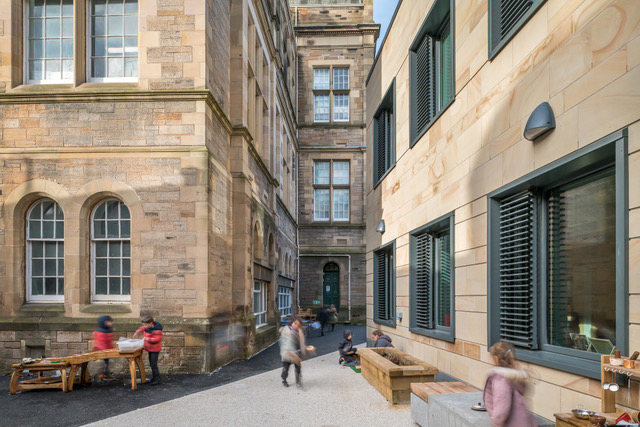Project Description
PassivHaus standard extension to Sciennes Primary School in Marchmont, Edinburgh. The existing primary school, constructed in 1892 is a grade-B listed building and is the largest primary school in Scotland with 630 pupils. The scope of the project is to provide a new 4 classroom annex on the existing school site. The provision of these new spaces allows the demolition of the temporary unit classroom to the rear playground that have outlived their life span.
A working group, formed with council Officers, School Management and Parent representatives, agreed that the feasibility study should explore all opportunities with the favoured outcome being a two-storey pavilion. The two-storey pavilion, located, seeks to complement the existing primary school provision within an architecture proposal of simple refined composition in keeping with its local context and historic site.
The internal open plan design is beneficial for learning as multiple opportunities for interaction between pupils are created through visual connection across the various teaching spaces. Large windows and roof lights flood the building with plentiful natural light creating an ideal environment for optimal performance. Structural cross laminated timber (CLT) will be exposed within teaching areas as this natural material creates a relaxing atmosphere for the users whilst providing environmental benefits.
Our Role / Scope
Doig + Smith are appointed to undertake the Project Management, Contract Administration, Cost Advisor and Principal Designer roles. Our role is to deliver the project on behalf of CEC ensuring the project is met on time and budget.
We have been responsible for administration of the contract which has included assembling project documents such as; developing the brief, programme, meeting and reporting schedule, Project Execution Plan and Authority Construction Requirements.
The project has now been completed and has received excellent feedback from the users.
Challenges
Challenges on this project occurred from the extension’s location. The narrow boundary spaces lead to discussions around space for access equipment to maintain the building and window cleaning strategy. The demolition of the temporary units to the rear playground had to be undertaken during school holidays and weekends with coordination with the live out of school clubs. The site is landlocked and is surrounded by narrow Edinburgh roads making communication with the residents key to the success of the project.
Successes
Two enabling works packages were undertaken with the demolition of the existing temporary units to the rear and the installation of new temporary units to the front of the school to house the decant. These works were carried out successfully in a live environment. Early engagement with the client on the health and safety file contents has resulted in a format which will be cohesive with the existing council strategy. The commitment to the PassivHaus design is also a commitment in helping address climate change. The main works package commenced in April 2022.
Lessons Learned
During the feasibility stage it was important to involve the stakeholders and understand that creating and maintaining high quality, fit for purpose educational facilities demonstrates to pupils, teachers, staff and the community how valuable learning is.
The use of CLT in construction has a positive impact on carbon sequestration within the built environment. Whilst CLT minimises cold bridging, and is therefore beneficial for thermal comfort, the structural material also has a positive impact on climate change as it provides carbon storage with every m3 of CLT capturing 1 tonne of CO2. The material is both recyclable and biodegradable.




